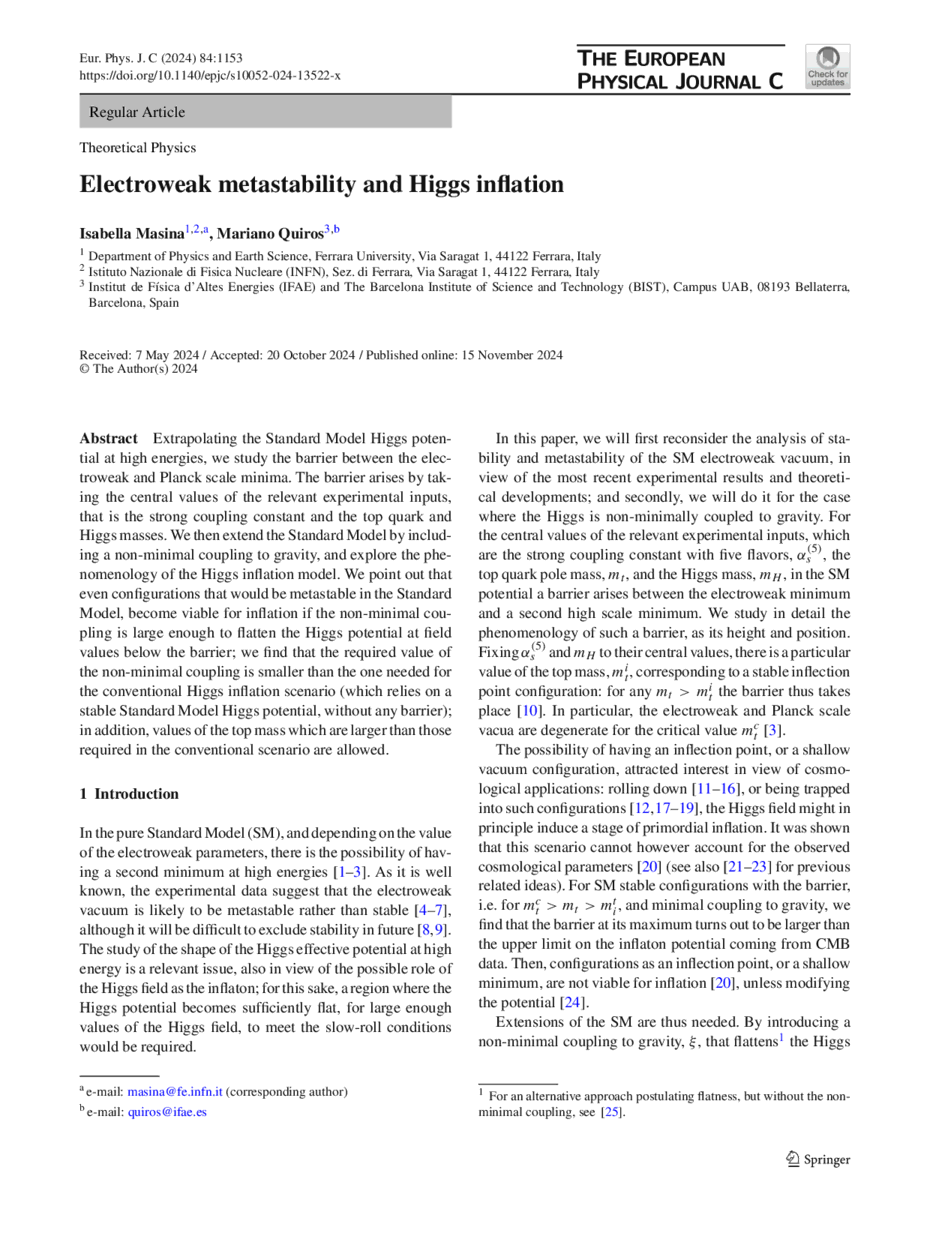https://doi.org/10.1140/epjc/s10052-024-13522-x
Regular Article
Electroweak metastability and Higgs inflation
1
Department of Physics and Earth Science, Ferrara University, Via Saragat 1, 44122, Ferrara, Italy
2
Istituto Nazionale di Fisica Nucleare (INFN), Sez. di Ferrara, Via Saragat 1, 44122, Ferrara, Italy
3
Institut de Física d’Altes Energies (IFAE) and The Barcelona Institute of Science and Technology (BIST), Campus UAB, 08193, Bellaterra, Barcelona, Spain
Received:
7
May
2024
Accepted:
20
October
2024
Published online:
15
November
2024
Extrapolating the Standard Model Higgs potential at high energies, we study the barrier between the electroweak and Planck scale minima. The barrier arises by taking the central values of the relevant experimental inputs, that is the strong coupling constant and the top quark and Higgs masses. We then extend the Standard Model by including a non-minimal coupling to gravity, and explore the phenomenology of the Higgs inflation model. We point out that even configurations that would be metastable in the Standard Model, become viable for inflation if the non-minimal coupling is large enough to flatten the Higgs potential at field values below the barrier; we find that the required value of the non-minimal coupling is smaller than the one needed for the conventional Higgs inflation scenario (which relies on a stable Standard Model Higgs potential, without any barrier); in addition, values of the top mass which are larger than those required in the conventional scenario are allowed.
© The Author(s) 2024
 Open Access This article is licensed under a Creative Commons Attribution 4.0 International License, which permits use, sharing, adaptation, distribution and reproduction in any medium or format, as long as you give appropriate credit to the original author(s) and the source, provide a link to the Creative Commons licence, and indicate if changes were made. The images or other third party material in this article are included in the article’s Creative Commons licence, unless indicated otherwise in a credit line to the material. If material is not included in the article’s Creative Commons licence and your intended use is not permitted by statutory regulation or exceeds the permitted use, you will need to obtain permission directly from the copyright holder. To view a copy of this licence, visit http://creativecommons.org/licenses/by/4.0/.
Open Access This article is licensed under a Creative Commons Attribution 4.0 International License, which permits use, sharing, adaptation, distribution and reproduction in any medium or format, as long as you give appropriate credit to the original author(s) and the source, provide a link to the Creative Commons licence, and indicate if changes were made. The images or other third party material in this article are included in the article’s Creative Commons licence, unless indicated otherwise in a credit line to the material. If material is not included in the article’s Creative Commons licence and your intended use is not permitted by statutory regulation or exceeds the permitted use, you will need to obtain permission directly from the copyright holder. To view a copy of this licence, visit http://creativecommons.org/licenses/by/4.0/.
Funded by SCOAP3.





